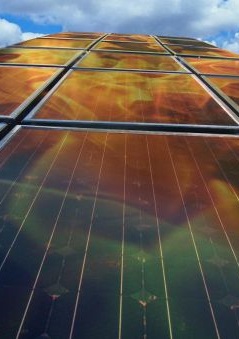Space repairs tested
 Australian researchers have worked out how to repair damaged solar panels in space.
Australian researchers have worked out how to repair damaged solar panels in space.
Researchers have demonstrated that perovskite solar cells damaged by proton radiation in low-earth orbit can recover up to 100 per cent of their original efficiency via annealing in thermal vacuum.
This is achieved through careful design of the hole transport material (HTM), which is used to transport photo-generated positive charges to the electrode in the cell.
The project is the first to use thermal admittance spectroscopy (TAS) and deep-level transient spectroscopy (DLTS) to study the defects in proton-irradiated and thermal-vacuum recovered perovskite solar cells (PSCs).
It is also the first study to use ultrathin sapphire substrates with the high power-to-weight ratios suitable for commercial applications.
The results have been published in the journal Advanced Energy Materials and are available here.
The researchers found that certain types of PSCs, specifically those containing the compounds Spiro-OMeTAD and LiTFSI, were less radiation tolerant and prone to degradation and efficiency losses over time.
Chemical analysis revealed that fluorine diffusion from LiTFSI induced by proton radiation caused defects in the perovskite photo-absorber.
However, cells without Spiro-OMeTAD and LiTFSI did not experience fluorine diffusion damage, and degradation caused by radiation could be reversed through heat treatment in a vacuum.
The research provides valuable insights for the development of lightweight, low-cost solar cells for future space applications.







 Print
Print